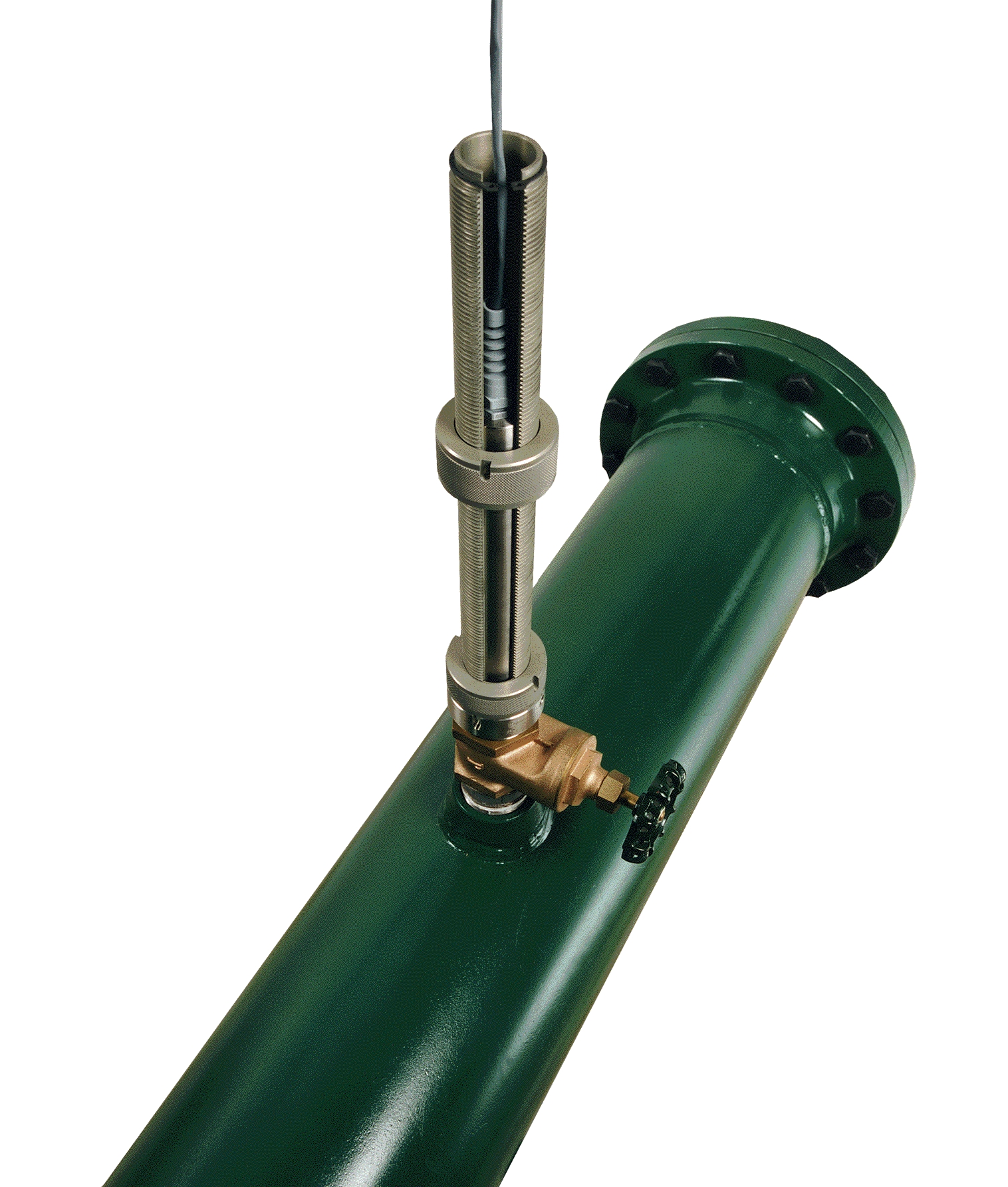 Choosing a Location
Choosing a Location

Magnum can be installed at any angle on any pipe. On steel pipes a
2" tap is used, while platic or concrete pipes require a saddle arrangement.
A vertical installation (see photo) is most common, but depending on available
space and wether or not air or foam could be trapped at the top of the
pipe an installation at an angle or even horizontal may be advantageous.
In order to insure the best possible measurement some locations are
better suited then others. First and foremost make certain the pipe
is actually full. Pipes which lead from open bodies of water also often
promote the building of vortices which interrupt the flow profile and pull
air into the system for some considerable distance. Significant amounts
of Air or air bubbles may interrupt the functioning of the flowmeter. The
sensor needs to be fully submerged in conductive liquid in order to function.
For up and downstream distance from obstacles the general rule of thumb
for most flowmeters is 10 pipe diameters upstram and 5 pipe diameters downstream.
These distances can be reduced the larger the pipe or the faster the flow
in it. The goal is to find a location in which the flow is fully developed
and turbulent - resulting in a very flat and symetrical flow profile. This
is the most common condition in larger pipes, so they require less straight
run on average.
Since there is no scientifically reliable way to positively identify
the ideal location some educated guess-work may be required. Try to choose
an installation location with as much straight run as possible. Avoid close
proximity to valves (especially butterfly-valves), ellbows, junctions with
other pipes, and water intakes from open bodies of water. Due to its configuration
and size Magnum is not much affected by what happens after the measurement
location. If you are certain that the flow profile is asymetrical consider
using two or more Magnum sensors mounted opposite from each other.
return
